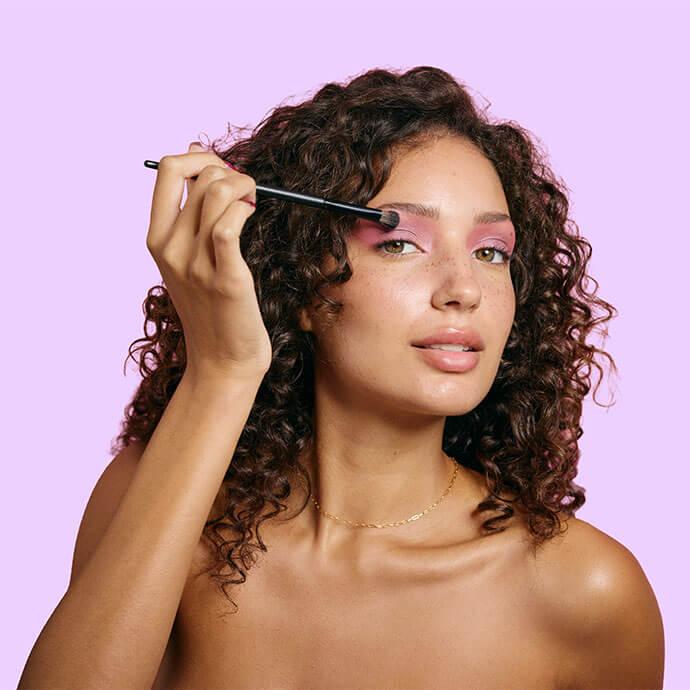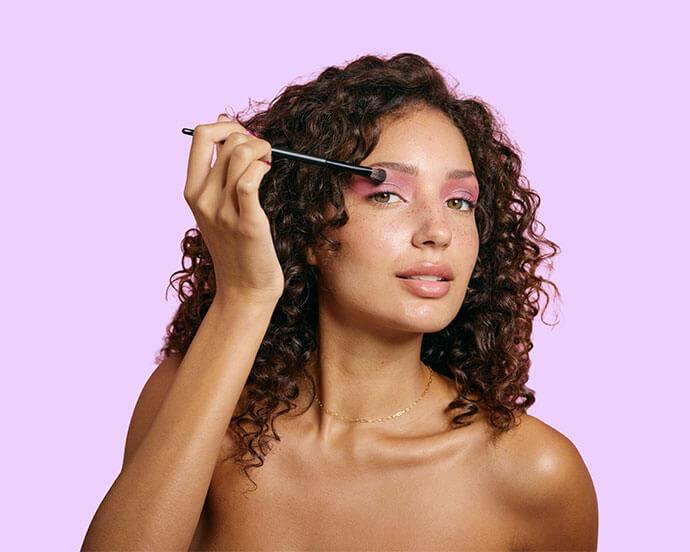How to Use Retinol Like a Pro, According to Dermatologists



Lindy Segal


Ask anyone their skincare routine, and it’s usually only a matter of time before retinol enters the conversation. Widely regarded as both an anti-aging and anti-acne miracle ingredient, retinol is a favorite among dermatologists, estheticians, and skincare enthusiasts alike. And although it eventually provides an otherworldly glow, it is also known for some not-so-cute side effects—especially if applied without the proper prep.
Although “retinol” has become somewhat of a catchall term, the ingredient actually comes in several forms. The milder retinyl palmitate and retinaldehyde are what you’ll generally find in over-the-counter skincare products, and they tend to be less irritating. Their prescription-strength cousins, retinoids, are often considered the most effective—and powerful. Tretinoin (a.k.a. Retin-A), tazarotene, and adapalene fall into the latter category. All types of retinol are derived from vitamin A, and offer similar complexion-boosting benefits thanks to their unmatched ability to encourage cell turnover.
“[Retinol] boosts cell turnover to reveal smoother, brighter skin, while unclogging pores to help clear acne, and stimulates collagen production to plump your skin and treat acne scars,” explains dermatologist Jessie Cheung, MD. And although you’ll find it in everything from serums and essences to moisturizers and eye creams, using retinol effectively requires a little more education than your average active ingredient. Read on for our crash course on retinol 101, with dermatologist-approved tips—plus, a few products we have in our starting lineup.


It's about glam time you treated yourself.
MEET THE EXPERT
Jessie Cheung, MD, is a board-certified dermatologist and founder of Cheung Aesthetics & Wellness in Chicago.
How often should I be applying retinol?
Retinol is so potent and effective that applying it takes some homework. Namely, you want to avoid what is called retinization—the red, flaky reaction many people experience when they use too much, too soon. “If you're just starting to add a retinol to your skincare regimen, try applying only twice a week,” advises Dr. Cheung, who adds “It's normal to notice some flaking and redness initially.” But the more time you give your skin to get used to it, the less it will react—giving way to a newfound glow.
When your skin settles back down, you and retinol are ready to take the next step in your relationship. “Once [the irritation] calms down, you can graduate to more frequent application. Retinol can be applied every night as tolerated,” says Dr. Cheung. “As tolerated” being the keywords: Those with sensitive skin may want to keep it to twice a week. If your skin starts to misbehave again, take a step back in how often you apply.
When should I start using retinol?
We have good news and, well, more good news. “It's never too early to start using retinol,” says Dr. Cheung. “Retinol can be started in your teens to help with oil production and acne, and should be continued throughout adulthood for its anti-aging benefits.” However, the retinol products you use may transition as your skin’s needs change. For instance, you might start out with a prescription retinoid spot treatment for acne, then swap to a retinol serum for age spots and fine lines.
Even better, it’s also never too late to start. Although many people start incorporating retinol into their routines in their 20s or 30s for preventative anti-aging, all is not lost if you start using it later on; in fact, it’s arguably the most effective ingredient for visibly treating existing fine lines, wrinkles, and age spots. And if you’re using retinol for the first time, it’s usually best to begin with an over-the-counter option, unless otherwise recommended by your dermatologist. It’s also important to note that pregnant women should not use retinol.
How to apply retinol, step-by-step:
Like slow frequency, strategic application is one of the best ways to introduce your skin to retinol (or try a new product). “If you're worried about skin irritation, think of using your moisturizer to create a retinol sandwich,” says Dr. Cheung. The process is known as the—wait for it—“sandwich method,” and it’s intended to minimize potential side effects.
First, cleanse your skin as you normally would, and dry your face completely.
Then, apply a thin layer of moisturizer as a cushion of sorts, followed by the retinol product.
Finish with another layer of moisturizer to seal everything in. “The moisturizer ‘bread’ will pull and push the retinol into your skin, and also helps to prevent dryness,” explains Dr. Cheung.
You can adopt a similar process for your eye routine, combining the retinol product with a hydrating eye cream.
In the morning, layer on a broad-spectrum sunscreen with SPF 30 or higher during the day. And if your skin is especially fair or sensitive, consider wearing hats when you first start your regimen to avoid further exacerbating redness.
When applying multiple products, you can start with the most lightweight consistency first, and continue to layer products until you finish with moisturizer, says Dr. Cheung. And if this method sounds like a whole process, keep in mind it’s a once-a-day deal. “Retinol should be used at nighttime, as the sun may destabilize it,” says the derm.
The best products with retinol to try now:
1. HEY HONEY Look Into My Eyes Retinol Eye Mask
The thin skin around our eyes famously shows fatigue and signs of aging more than other areas of our face. This retinol-spiked eye mask helps boost collagen production to smooth the look of fine lines, plus bee propolis to soothe inflammation, as well as squalane and coconut oil to moisturize. Plus, it’s even safe for all skin types—including sensitive skin. And with Ipsters saying it makes eyes “almost instantly brighter,” and that they “saw results after one use,” what more could you ask for?
2. MURAD Retinol Youth Renewal Eye Serum
Created with a one-two punch of retinol and collagen-building peptides—and without parabens, sulfates, or phthalates—this lightweight serum is your new best friend for plumping up crow’s feet and fine lines. Add in the brightening red algae and giant kelp to help awaken under-eye circles, and it’s no wonder one Ipster called it the “Fountain of Youth.” Meanwhile, another fan shared an insider tip that effectively doubles the reasons you need it: “I add a dab around the laugh [line] area as the French do and the results are just as amazing.”
3. CLARK’S BOTANICALS Retinol Rescue Overnight Cream
Skincare enthusiasts have been hoarding this cult-favorite cream for years. The dreamy formula not only has retinol, but it’s also fortified with vitamin E to nourish and protect even dry skin types. And while it will certainly help smooth fine lines while you sleep, Ipsters will tell you the benefits don’t stop there. One reviewer raved “I have a lot of trouble with acne and acne scarring and this product has helped my skin improve [immensely].”
Want in on all the Glam Bag fun? Take our Beauty Quiz now to get started. Already an Ipster? Refer your friends to earn points, which you can use toward products. Either way, don’t forget to check us out on Instagram and Twitter @IPSY.
Liked this post? Share!
Related Stories


How-To
How to Apply Eyeshadow: A Beginner’s Guide to Flawless Eye Looks
Published on Dec 4, 2025 • 10 min read


How-To
How to Do Winged Eyeliner Like a Pro (No Steady Hand Required)
Published on Dec 3, 2025 • 9 min read
How-To
Try a Soft Goth Aesthetic This Season to Evoke Your Inner Wednesday Addams
Published on Feb 23, 2023


How-To
Everything You’ve Ever Wanted to Know About Mastering the Art of Bronzer
Published on Nov 5, 2025 • 10 min read


How-To
Blush Sticks 101: How to Apply Them and the Best Blush Sticks to Use
Published on Nov 5, 2025 • 13 min read


How-To
How to Treat Yourself: 39 Simple Self-Care Ideas
Published on Oct 22, 2025 • 15 min read


How-To
How to Cover Melasma With Makeup Like a Pro in 4 Simple Steps
Published on Sep 26, 2025 • 5 min read


How-To
Master Mascara Application With These Game-Changing Tricks
Published on Sep 25, 2025 • 15 min read


Beauty Picked Just for You
Get 5 products worth up to $70
Plus exclusive access to epic deals up to 80% off
Starting at just $14/month. Cancel anytime.